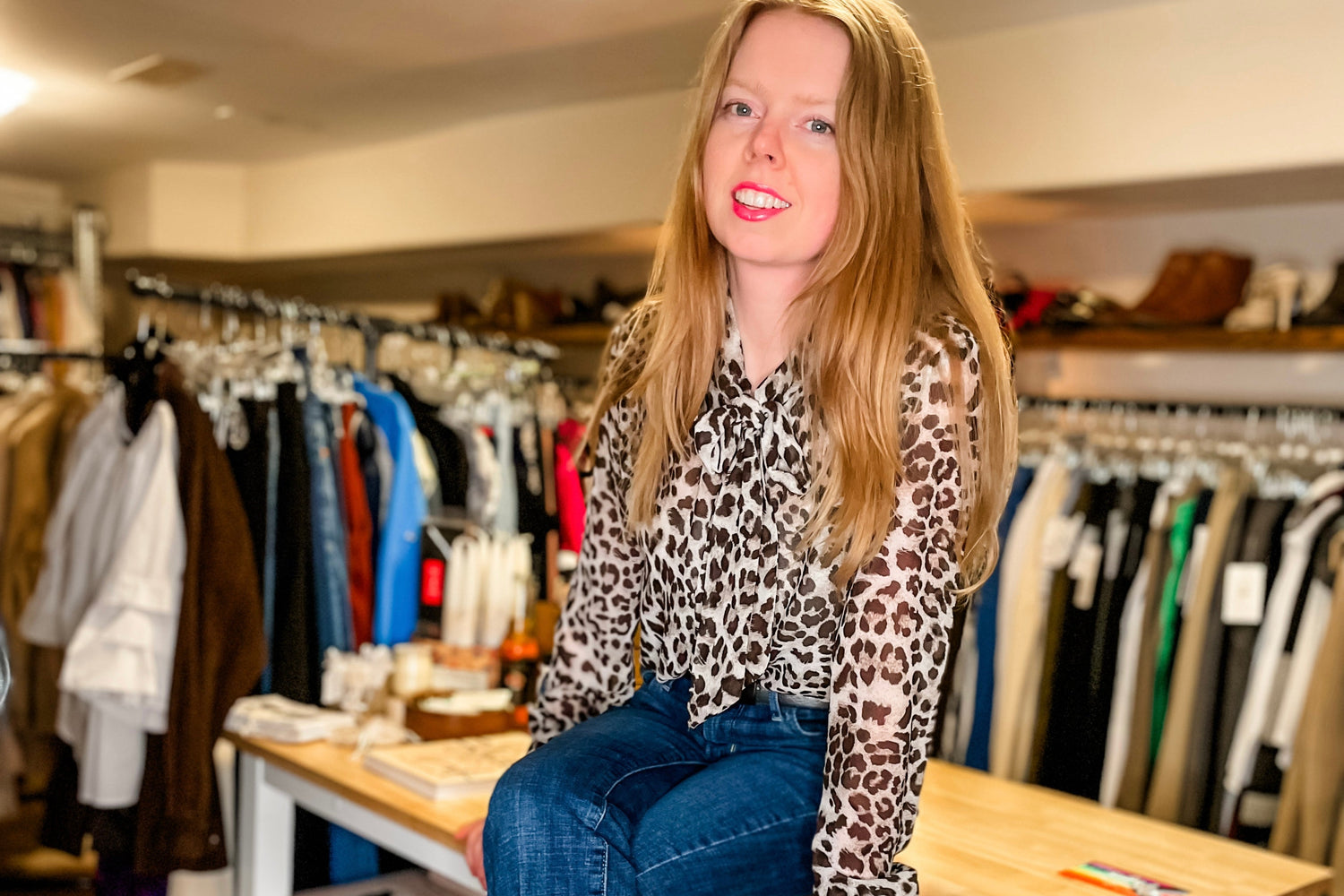When I started Le Prix in 2012, I was still an undergraduate student with a passion for thrifting, fashion and making the world a better place. This led me to research why people shop second-hand. Here are the highlights from my academic research:
ABSTRACT
Shopping for second-hand apparel is rapidly growing and has become a notable segment of the retail market. The purpose of this study is to determine what influences consumers when shopping second-hand for apparel products in-store and online. According to the existing literature, a number of key factors play significant roles for second-hand apparel shopping consumer decisions. They include: social, costs, trends and environmental influencers. Past research has not concentrated in-depth on the hedonistic and social influences of second-hand apparel shopping, financial factors, and time spent shopping for second-hand apparel. This study has observed the socio-demographic profile of second-hand shoppers, what location is preferred for shopping, and what influences them in their purchase decision-making. Quantitative research methods were used to observe consumer behavior, shopping attitudes both instore and online, and socio-demographics. Surveys were conducted with 157 participants, in-person and online. The results of the study show the key factors which influence second-hand apparel shopping are social, economic, and environmental. The majority of shopping for second-hand apparel is in-store, more women are shopping than men and, perceived value and social influence are the key to what drives consumers to shop and purchase while income is not a key indicator. The findings of this study further our understanding of consumers of second-hand apparel, where they shop, and what influences them. This provides needed information to second-hand retailers to better tailor shopping environments.
INTRODUCTION
The second-hand apparel market is considered a space where fashion items that have been previously owned or used, are resold by the owner, a charity or a for-profit business (Castellani, Sala, and Mirabella 2014). This secondary market repurposes and diverts materials that otherwise would end up in landfills. It is driven by shoppers meeting their needs, or those who enjoy the thrill of the hunt and novelty of second-hand apparel shopping. It is growing every year and the percentage of the population involved in this market continues to increase. Second-hand apparel shopping and decision making encompass sustainability, human geography and retail geography. Location selection for retail stores and how to present goods based on where and how customers are shopping is a common question second-hand retailers face. For a relatively new and popular topic, there are many gaps in knowledge regarding financial and environmental considerations and consumer perceptions of the second-hand apparel market. The Waterloo Region consists of a growing number of second-hand stores, some of which are charitable and others are for profit, which will all benefit from the exploration of this research topic.
This study explored where people second-hand shop, shopper attitudes and influencers, and their socio-demographics. In particular, this study hypothesized that second-hand retail sector is likely to be highly influenced by social networks. A self administered survey questionnaire was utilized in this study. Participants were recruited in person nearby local stores.
To ‘fit in’ and be socially validated, consumers tend to seek apparel that helps reduce nonconformity and provides recognizable brands. Social influence is a large component for consumers when shopping in regards to what stores to shop at and what to purchase. Income is not expected to be a key indicator for second-hand consumers but their perceptions of value are of importance. Hedonistic traits play a key role in the consumer decision making process both in-store and online because consumers are searching for a one-of a-kind deal. Consumers still want to dress presentably, but they want to purchase items of value, re-using resources is an added benefit. With the one-of-a-kind nature of second-hand fashions, online shopping is expected to be less prevalent than in-store shopping due to the time it takes to maintain e-commerce platforms with individual items, compared to thousands of items available in the conventional fashion market. Another component to deter consumers from purchasing second-hand fashion items online is the increased element of perceived risk since shoppers cannot evaluate the items by feel and trying on in person to gauge the condition of the items. This study will observe popular stores for second-hand apparel shopping which are expected to be the most visible stores for foot traffic such as Value Village and Goodwill. The findings of this study will add new information to the literature as well as understand the second-hand consumers and their attitudes, more in-depth.
Summary of Results
Second-hand shoppers sampled for this study were observed to be somewhat representative of the population. The sample was over-represented by women and had an above average reported income of $54,375. The majority of the sample indicated that their ethnic origins were Canadian and European, and half of the participants were in their early to mid-20’s resulting in an overrepresentation of younger participants. The lack of representativeness may be the result of self-selection given that the sample includes only those who chose to volunteer and these individuals may have stronger opinions than those who chose not to participate. Similarly participants who provided their friends with access to the survey may have had similar opinion. The implications of a biased sample make inferences and trends less trustworthy. Trends cannot be applied to the greater population, and statistics computed in this study may not be replicated elsewhere, and results may not be transferrable to other locations.
Attitudes towards second-hand apparel shopping in-store and online varied significantly among the participants. Overall, preference to shop longer and to spend more money in-store was exhibited, as expected. In general, purchasers are conscious about their economic situation when shopping and look for fashions with value and utility. Shoppers are more willing to price compare 108 online than in-store. Notably, online shoppers bought without hesitation more often than in-store shoppers, yet they did not later regret the purchase.
Shopping location preferences were apparent throughout the study. Well-known second-hand stores with many locations such as Value Village and Salvation Army have higher reports of participants shopping in those locations. This may be due to increased brand awareness and stores located at prime locations. Shoppers who are concerned about fashion trends, they select shops that cater to their desires such as StylFrugal and Le Prix. For shoppers who have specific shopping goals such as purchasing designer footwear, store location has little influence on where they wills shop. Shoppers are willing to drive to stores they favor which could render location less important. It appears that some shopper archetypes such as “Dollar Defaulters” prefer blending online and in-store shopping for second-hand fashions rather than favouring only one. Meanwhile, other shopper archetypes like “Mature Enthusiasts” avoid online shopping. For bricks-and-mortar locations, “Quality Devotees” will avoid stores in the same proximity they perceive, or have experienced, as having low quality fashions such as Bibles for Missions, Thrift on Kent and KW New & Used. This trend is somewhat expected given they may avoid these stores in Downtown Kitchener, perhaps due to difficulty with parking or negative perceptions of the neighborhood. Overall, these patterns suggest that a convenient location is less important, while a run down location may be detrimental to drawing shoppers to stores.
Second-hand shoppers have very high expectations when they shop for second-hand items. Notably, second-hand shoppers perceive the best apparel is purchased in-store rather than online because they can execute tactile evaluation when shopping, leading to 109 increased time and money spent in-store. Time and money spent shopping online and in-store are positively related, and those with higher quality expectations spend more money online shopping. Different types of shoppers have different priorities, such as looking for second-hand designer pieces, to browsing for unique vintage graphic tees. Additionally, fewer risks and costs are associated with in-store shopping since the shopper can accurately purchase a product they have determined as in good condition.
Read our founder Robyn Hobbs' entire Masters thesis here.








